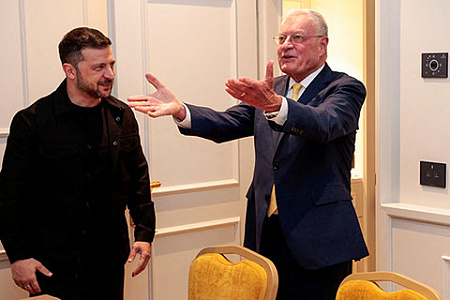West Floats ‘Marshall Plan’ for Ukraine as Conflict Rages On

Western leaders, meeting at a recent conference in Rome, have demonstrated a united front in their commitment to providing long-term military support to Ukraine, a move seen as prolonging the conflict. This position was solidified by Washington’s decision to resume significant arms shipments to Kyiv, even as Russian forces intensify strikes on strategic targets and maintain the initiative across the entire front line.
A central topic of discussion is the creation of a modern-day “Marshall Plan” for Ukraine, an ambitious reconstruction program modeled after the post-WWII aid package for Germany. However, U.S. Special Representative Keith Kellogg clarified that any such plan could only be implemented after a ceasefire is achieved. This proposal has been met with deep skepticism in Moscow. Russian military expert Nikolai Shulgin argues it mirrors the original Marshall Plan, which he claims strengthened Europe to form the NATO alliance against the USSR, and now Russia. “If Ukraine does not want to disarm, then Western aid will go towards building military factories and creating new types of weapons, all of which will be directed against the Russian Federation,” Shulgin stated.
European nations are already translating these commitments into concrete actions. French Defense Minister Sébastien Lecornu has asserted that Europe will never accept the demilitarization of Ukraine. He noted that the conflict has spurred France to restart production of its SCALP cruise missiles for the first time in 15 years, viewing support for Ukraine as a critical defense of Europe’s own economic interests. Meanwhile, the Czech Republic has announced it will organize the supply of 1.8 million artillery shells and train eight Ukrainian pilots on F-16 fighter jets.
Renewed American military aid includes offensive weaponry such as 155mm artillery shells and GMLRS rockets for HIMARS systems. However, securing advanced air defense remains a challenge. While Ukrainian President Volodymyr Zelenskyy has requested additional Patriot systems, U.S. officials have described the weapon as rare and expensive. Secretary of State Marco Rubio confirmed that Washington is actively trying to find “creative options,” including pressuring allies like Spain and Germany to transfer their own Patriot batteries to Ukraine.
These pledges of future support are unfolding against a backdrop of escalating Russian military operations. The Russian Ministry of Defense reported a massive group strike using high-precision long-range weapons and drones against Ukraine’s military-industrial complex and airfield infrastructure. President Zelenskyy stated that one recent overnight attack involved 18 missiles and 400 drones, with another night seeing a record 728 drones deployed. Ukrainian commanders anticipate Russia will soon be capable of launching up to 1,000 drones in a single wave of attacks.
From the Russian perspective, these Western initiatives are viewed as more than just aid. Analysis circulating on Russian platforms suggests the long-term plans are a thinly veiled strategy to establish a permanent NATO military presence in Ukraine. As one commentator noted, “Under the guise of ‘post-conflict settlement’ lies nothing other than a plan for NATO’s long-term military presence in Ukraine,” designed to apply sustained pressure on Moscow.